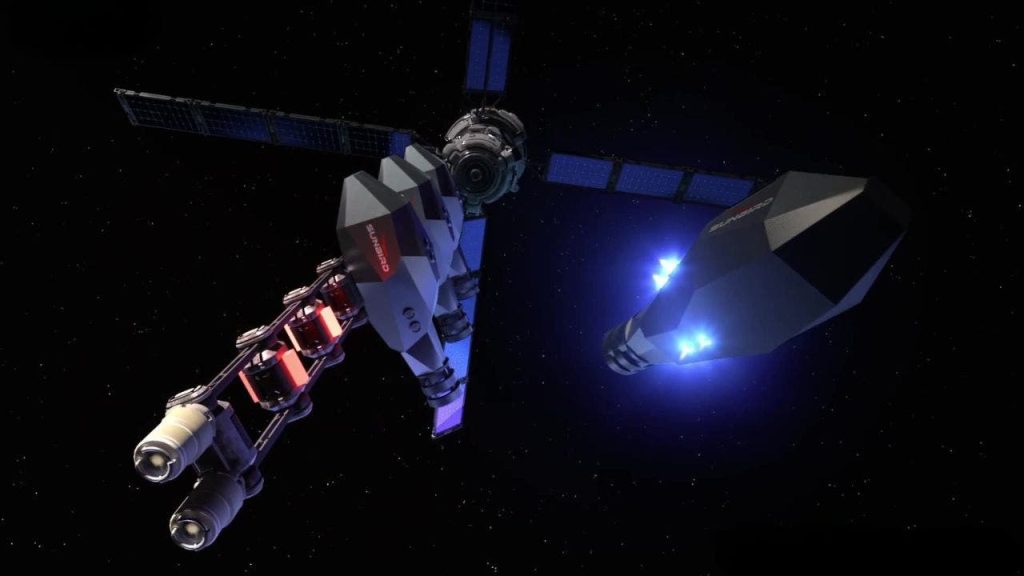The future of space travel is about to enter a groundbreaking new era with the development of a compact fusion engine by Pulsar Fusion, a U.K.-based aerospace company. This innovative engine, called the Dual Direct Fusion Drive, is designed to power a spacecraft named Sunbird, which promises to revolutionize space exploration with its capabilities to reach astonishing speeds and enhance mission efficiency. With ambitious plans for testing and deployment by the end of the decade, this technology could reshape how humanity interacts with the cosmos.
| Article Subheadings |
|---|
| 1) What makes Sunbird special? |
| 2) How does it work? |
| 3) What can Sunbird do? |
| 4) Slashing costs and energy requirements |
| 5) When can we expect to see Sunbird in action? |
What makes Sunbird special?
The Sunbird spacecraft stands out due to its remarkable speed capabilities, aiming to reach almost 329,000 miles per hour (mph), which is a speed unprecedented in current space travel technology. This extraordinary potential is facilitated by its advanced nuclear fusion propulsion system, which allows for a high specific impulse – essentially the efficiency of the thrust produced per unit of fuel. With an integrated power system that delivers 2 megawatts, the Sunbird is envisioned as a reusable vehicle that can dramatically reduce mission costs while increasing the feasibility of long-distance space expeditions.
How does it work?
At the core of the Sunbird’s technology is the Dual Direct Fusion Drive, designed to provide both thrust and continuous electrical power – a crucial innovation for deep space missions. It operates efficiently by generating specific impulse figures between 10,000 and 15,000 seconds, meaning that it can provide sustained propulsion with far less fuel than traditional rocket systems. This could allow longer missions, as craft powered by traditional rockets often face limitations due to fuel constraints. The power generated by the drive not only propels the spacecraft but also supports various systems aboard, increasing the overall mission viability.
What can Sunbird do?
Sunbird has a plethora of potential applications in space exploration. One of its key capabilities is transporting 2,200 to 4,400 pounds of cargo to Mars in an impressive duration of under six months — approximately two months faster than existing technologies. This time efficiency is particularly vital as it allows for timely delivery of supplies that can sustain human presence on the Red Planet. Beyond Mars, Sunbird could facilitate missions to distant targets such as Jupiter or Saturn within four years, and support scientific instruments operating in areas otherwise low on solar energy, thereby overcoming existing limitations on exploratory missions.
As a reusable cislunar transport spacecraft, Sunbird can deliver substantial supplies (up to 3,300 pounds) to lunar orbit, thereby enhancing operations for fuel processing and navigation for future lunar missions. Additionally, it could pave the way for mining expeditions to near-Earth asteroids, offering not only a reduction in travel times but also sufficient power to operate drilling and material processing techniques. Moreover, the technological advancements could lead to new power sources for next-generation space telescopes located beyond Earth, thus enabling deeper exploration of our universe.
Slashing costs and energy requirements
One of the significant challenges of space travel lies in the energy-intensive task of reaching low Earth orbit (LEO). The Sunbird system can stay stationed in orbit, allowing other spacecraft to dock and utilize the fusion power for the remainder of their journeys. This innovative approach could reduce fuel storage needs by as much as 50%, especially for ambitious missions targeting destinations like Mars or Jupiter. By effectively using the Sunbird spacecraft as a refueling station, space missions could be transformed into more efficient operations, saving both financial resources and time.
When can we expect to see Sunbird in action?
Pulsar Fusion is actively moving towards bringing the Sunbird technology to fruition, with plans for static testing slated for this year. The company aims to perform an in-orbit demonstration by 2027, a crucial milestone that will validate the capabilities of the Dual Direct Fusion Drive in the challenging environment of space. This will be an important step in assessing the robustness and operational functionality of the engine and spacecraft as they gear up for potential commercial application in the future.
| No. | Key Points |
|---|---|
| 1 | Pulsar Fusion is developing the Dual Direct Fusion Drive to enhance space travel. |
| 2 | The Sunbird spacecraft aims to reach speeds of up to 329,000 mph. |
| 3 | Utilizes nuclear fusion technology to significantly increase mission efficiency. |
| 4 | Can transport cargo to Mars and beyond, enhancing accessibility for future missions. |
| 5 | Expected static tests in the current year with an orbital demonstration scheduled for 2027. |
Summary
The development of the Sunbird spacecraft, driven by Pulsar Fusion’s cutting-edge Dual Direct Fusion Drive technology, represents a significant milestone in the field of aerospace engineering. With its capability to redefine the limits of distance and speed in space missions, Sunbird not only charts a path forward for deep space exploration but also sets the stage for future endeavors, including potential crewed missions. As plans for testing take shape, the anticipation surrounding the successful implementation of this technology underscores its potential to alter humanity’s trajectory within our solar system.
Frequently Asked Questions
Question: What is a Dual Direct Fusion Drive?
The Dual Direct Fusion Drive is a pioneering engine technology designed to provide both thrust and electrical power for space missions, utilizing nuclear fusion to achieve high efficiency and significantly reduce fuel requirements.
Question: How fast can the Sunbird spacecraft travel?
The Sunbird aims to reach speeds of approximately 329,000 mph, making it one of the fastest spacecrafts proposed to date, which could revolutionize space travel time.
Question: When will the Sunbird be ready for a demonstration in orbit?
Pulsar Fusion plans to conduct an in-orbit demonstration of the Sunbird by 2027, following its testing phase to validate the technology in real-world conditions.


